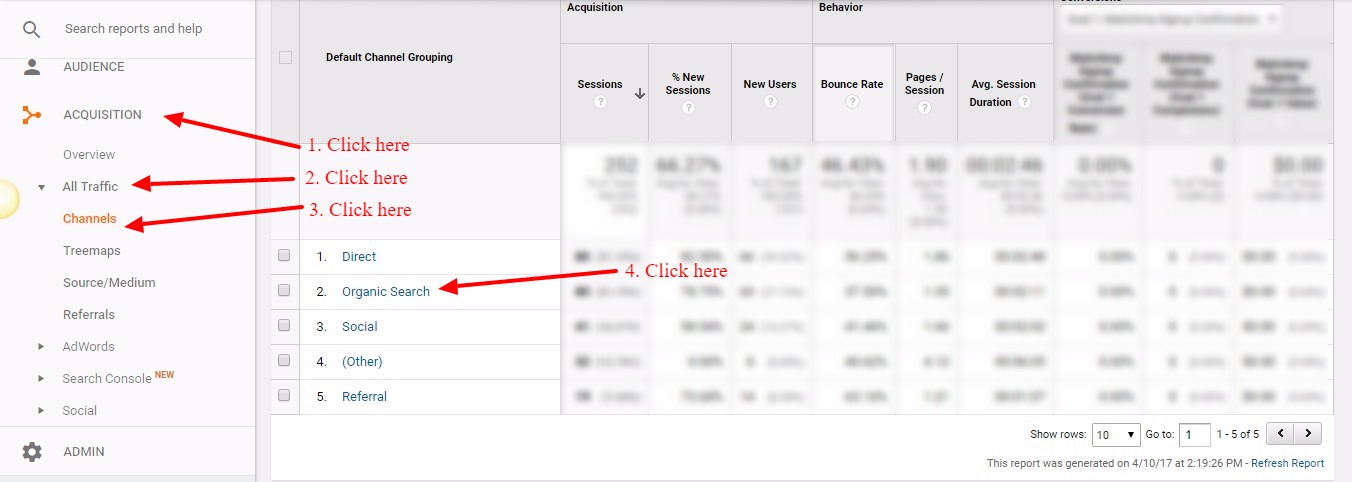Did Google really just update its search algorithm again? Say it ain’t so!
To be fair, Google has continually been refreshing their search algorithm since 2000, long before the infamous Panda Update that penalized tons of websites for thin content. We also recently covered Penguin 4.0 if you’re curious about that one.
However, every time Google pushes an update, site owners and marketers need to pay attention and stay on their toes. Best to be prepared in case the latest changes affect their own SEO campaigns.
Since Google is the search engine of choice for the vast majority of the public, every shift in the algorithm could lead to a drop in rankings. That in turn can lead to lower CTRs and lost revenue for those businesses which were affected.
What’s “Fred” All About?
On March 9, Google rolled out an unconfirmed major search algorithm update which now goes by the name “Fred.”
Google’s Gary Illyes jokingly coined the name and for better or worse, it stuck in the SEO community. Jokes aside, as with any algorithm update, it’s not something that should be taken lightly by any business with an online presence.
@rustybrick @i_praveensharma @JohnMu sure! From now on every update, unless otherwise stated, shall be called Fred
— Gary Illyes ᕕ( ᐛ )ᕗ (@methode) March 9, 2017
For starters, during an AMA with Google on SMX West, Gary Illyes confirmed that the search algorithm update is just reiterating what the Google’s webmaster guidelines state regarding quality.
What @methode can say about Fred, your answer is in our webmaster guidelines. #smx
— Barry Schwartz (@rustybrick) March 23, 2017
Therefore, if you feel like you’ve been phoning it in with your site’s on page content, then you might want to reconsider improving your content development process to avoid potential drops in ranking for your target keywords. If you need a better understanding of what qualifies as thin content, then I suggest you watch this video by Matt Cutts which remains relevant for this algorithm change.
We’ve also written at length about how to produce great content, so take a few minutes to check out our guide as well.
To summarize, unless you’re running an affiliate site with loads of ads, there’s probably no cause for concern on your part.
How to Know If You Got Penalized by Fred
If you happen to be one of the unfortunate few that have been affected by the Fred algorithm update, it’s time to get down to brass tacks. First, I’ll show you how to determine which pages are affected. Second, we’ll address how to remedy the problem.
The first part is quite simple. Start by logging into your Google Analytics account.
Next, go to Behavior > Site Content > All Pages. Here, we’re going to compare the period before the Fred update took place and after implementation (March 9 onwards).

By analyzing these results, you can see if certain pages have experienced a sudden drop in traffic after Fred was rolled out.
Next, you’ll want to verify if a penalty was the cause of any drop you might noticed.
Start by going to Acquisition > All Traffic > Channels and click on “Organic Search.” From here, you can again compare the referral traffic before and after the algorithm update to see if there is a significant decrease in your organic search traffic.

How to Recover If Fred Affected Your Site
Now that you know how to identify any pages on your site that may have been affected by Fred, let’s take a closer look at how to fix the problem should you find your site affected.
Improve content
If the affected pages have thin content, then you should revise and improve the pages to make them more useful to visitors. Below are suggestions that you should consider when editing your content.
- Increase word count – Word count is not necessarily a precursor to great content. But the more words there are on a page, the more detail and information there will generally be. In fact, serpIQ found that to appear on the first page of search results, you should aim to have at least 2,000 words in your content.
- Add media – Staring at a wall of text will discourage visitors from reading through to the end. As you might infer, this will negatively impact your bounce-rate. To prevent this from happening, include images and videos within your content. Matching your written content with visual aides will help increase readability and keep visitors engaged on your site longer.
- Link to valuable resources – Your content will also frequently benefit from strong outbound links. These can be used to validate information, or to give additional context on a subject. This kind of link-building is more for the benefit of your readers than anything else. Supply readers with additional details through links, and they will remember the favor.
These are just a few of the ways you can improve upon thin content. In short, to product future-proofed content, you’ll want to focus heavily on quality.t, then you need to deliver on quality. That means improving your content creation process from start to finish, so you can provide serious value with every post you publish.
For additional reading on this, check out this great post on Smart Blogger that covers the basics of how successful marketers approach content creation.
Remove ads
If your site is overly reliant on ads, that would probably be the reason you saw a drop in traffic after the Google Fred update rolled out. If this sounds like you, let’s get real. While you are in the business of making money through ad clicks and impressions, you have to appease your core audience with useful content as well as advertisements.
By following the tips on writing great content above and minimizing ad placements, you can start your path to recover from the penalty and recoup your rankings, traffic, and revenue.
For instance, if you’re using Google AdSense, you may remember that initially you could only include a maximum of 3 ad units on any page.
Eventually Google removed that limit, and that can put some publishers in a pickle. Without a set limit, some publishers may have found themselves incentivized to abuse the ability to place far too many ads on a given page.
Ultimately, the success of your ad units will be dependent on a number of different factors. These include site layout, ad placement within the page, and more. Each situation will be unique.
In the case of ShoutMeLoud’s Harsh Agrawal, five (5) ad units on a page worked for him the best. That amount of ad units may or may not work on your site, so I’d advise that you test and measure the results carefully to ensure your efforts yield the highest possible returns.
Regarding the placement of ads within the content, start by making sure that visitors can identify them as actual ad units. Don’t feature them above the fold and design them with colors that make them look like just another proprietary piece of your site’s content. This is clearly against Google’s policies and also deceptive to users. Refer to this post for more information.
Clean up backlinks
Link profiles also play a crucial role in determining the search rankings of your pages. So while it’s unlikely, it is still possible that the Fred algorithm update may have penalized your site for recently acquiring low-quality backlinks.
Maybe you bought them on Fiverr? We’re not going to judge (but please don’t buy links on Fiverr!). Many times, backlink services will build cheap and low quality links instead of high-quality and relevant links. This is hardly a newsflash.
It’s also possible that scraper sites may have scraped your posts or content, and made some crummy links to that content. Unfortunately, Google can take this into account as well.
Regardless of the root cause, if you find you have a link profile problem, you can consider disavowing the worst offending links. Manually figuring out which links to disavow can be tricky to say the least, even if you are well-versed in SEO. Using a third party tool like SEMrush will make the job easier for you as both tools will help you identify the links that you need to flag.
If you’re a RankPay customer, we provide a Google disavow service that we’ll be happy to explore with you if it’s both appropriate and necessary.

Still, consider this option as your last resort. You don’t want to mistakenly disavow a domain that happens to have good SEO metrics.
Focus first on refining your content strategy, and ensuring your ad placement isn’t overblown. If after making efforts on those initiatives, you still seem to be suffering, then you should start exploring the possibility of disavowing low-quality links.
Google Fred Update in a Nutshell
The effects of the Google Fred algorithm update may not be groundbreaking. After all, it is essentially just an amplification of existing Google content guidelines. It’s thus aimed at catching violators that weren’t previously caught.
Considering that most of the affected parties have been low-quality affiliate sites and blogs built for the sole purpose of earning commissions, odds are your site will be unaffected.
However, as with every algorithm update, it’s important that you keep it in mind going forwards. It’s in your best interest to play nice with Google and keep those top rankings in tact.
If you generally stay cognizant of respecting your visitors’ best interests, there’s no need to lose any sleep over Fred.
If not, then take this opportunity to understand what it takes to earn sustainable rankings on Google.
One last note regarding thin content. If you’re strapped for time (like so many small business owners), it might make the most sense to consider outsourcing your blog. We have a one-stop solution for this, so I’d encourage you to check out our blog management services page.
If you do sign up, you’ll be paired up with a dedicated US-Based writer that can handle all of your blog needs from start to finish.








